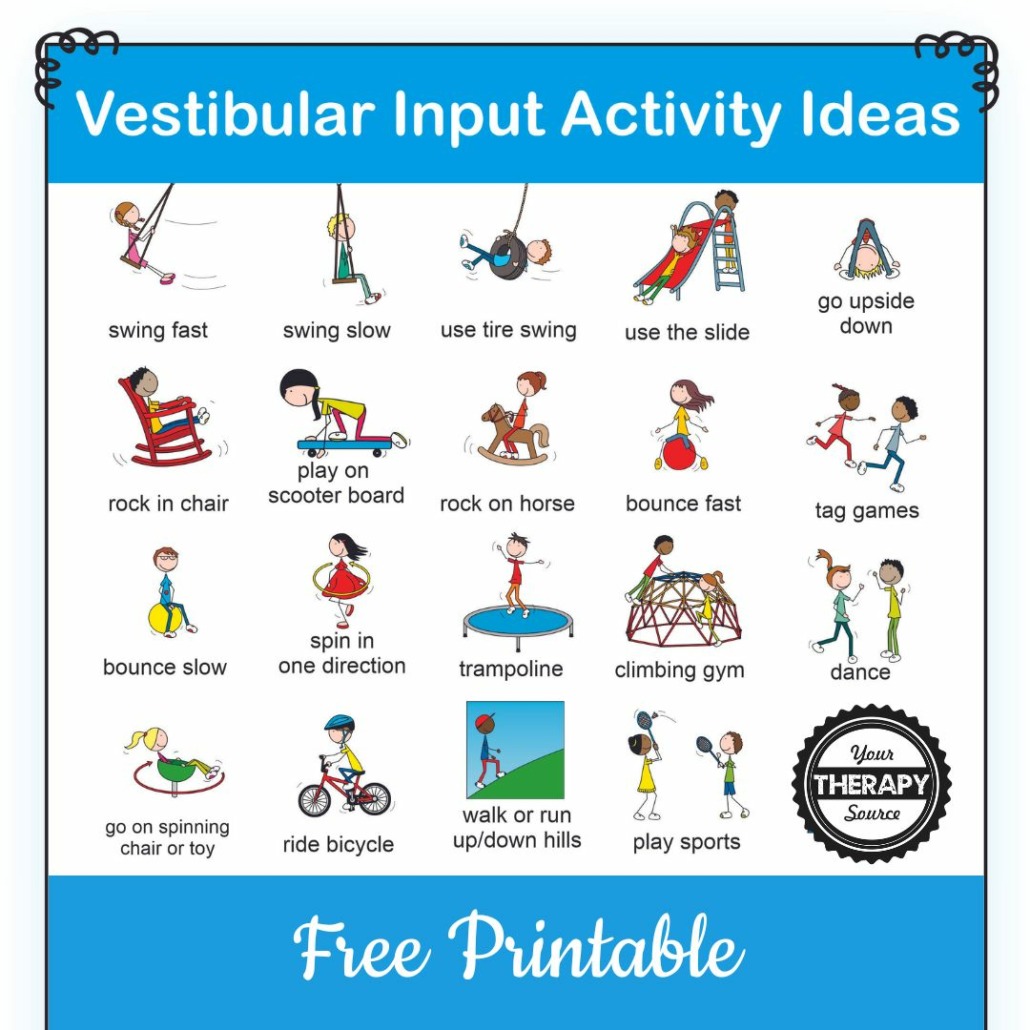Vestibular Input Activities and Ideas to Help Children
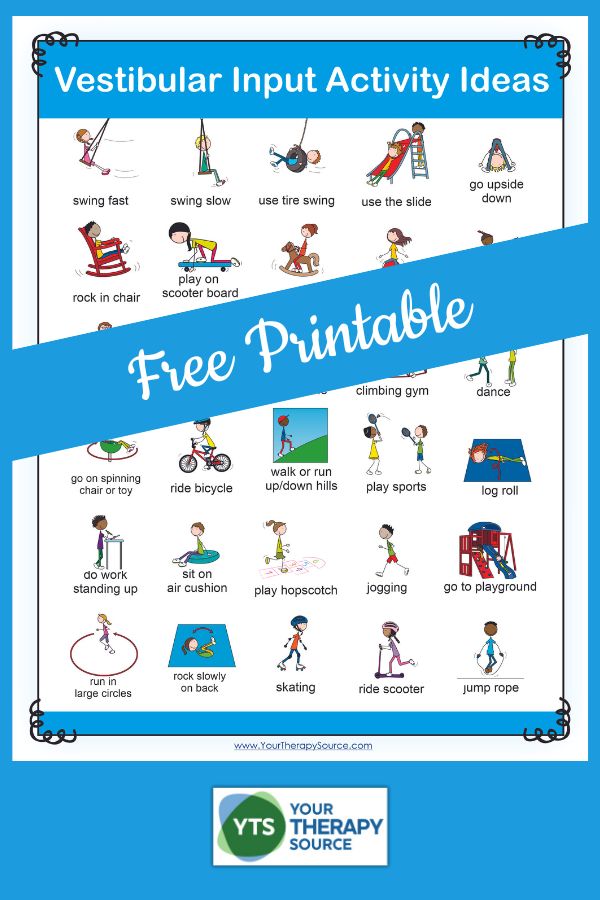
Various sensory systems deeply influence children’s growth and learning. These systems lay the groundwork for behaviors, motor activities, and cognitive development. One sensory system, often under-recognized but profoundly influential, is the vestibular system. Vestibular input is extremely important for the healthy physical development of children.
You can download a FREE poster to provide visual ideas for vestibular input at the bottom of this post.
Would you prefer to listen to this article? Press play below.
What is the Vestibular System?
Nestled within the inner ear, the vestibular system detects shifts in our body’s position. Whether it’s spinning, swinging, or merely turning the head, this system is on high alert. In essence, it acts as our internal gyroscope, keeping tabs on gravity, movement, and spatial orientation.
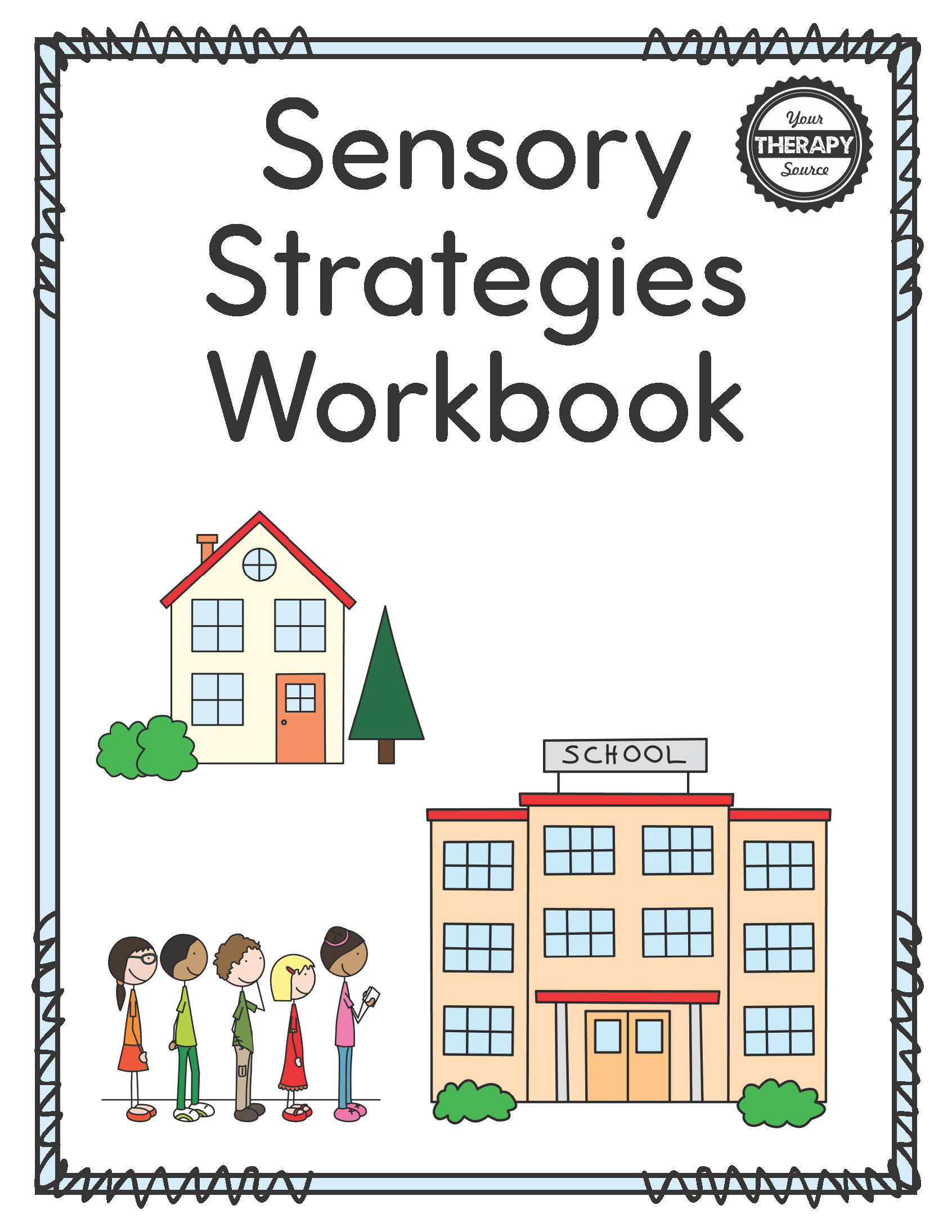
Sensory Strategies Workbook
Children’s Natural Attraction to Vestibular Activities
Have you noticed kids’ love for playground swings, dance sessions, or the sheer joy of spinning till they’re dizzy? Or the thrill they find in going upside-down on slides or bouncing on trampolines? This attraction stems from their inherent desire for vestibular input. The sensory inputs from these activities feed their vestibular system, catering to their innate cravings.
What is Vestibular Input?
Vestibular input relates to the information our brains receive about movement and gravitational change. It’s essential for tasks like coordinating our eye movements when we turn our heads, keeping our posture straight, or understanding our spatial orientation. This is why kids are naturally drawn to swings, spins, and other activities that provide this vital sensory stimulation.
Role of the Inner Ear in Vestibular Input
The inner ear is the primary organ responsible for collecting vestibular information. Structures like the semicircular canals and otolith organs play a significant role inside it. When we move our heads, the fluid in these canals shifts. This movement activates receptors, sending signals about our position and movement to the brain.
Types of Vestibular Input:
The vestibular system, primarily situated within the inner ear, deciphers head position and motion. This complex system contributes significantly to balance and spatial awareness. Various activities induce distinct types of vestibular stimulation. Specifically, there are three main types to consider:
- Linear: This type involves forward and backward or side-to-side movement, similar to the sensation experienced when swinging or sliding.
- Rotational (or Rotary): As the name suggests, this input is associated with circular or spinning movements, like when a child twirls around or uses a merry-go-round.
- Inversion: This relates to activities where the head is positioned below the heart, giving a feeling of being upside-down. Examples include hanging from monkey bars or performing handstands.
Recognizing these types and incorporating them into activities can offer a comprehensive vestibular experience, which can be both enjoyable and beneficial for children.
How Vestibular Input Influences Sensory Integration and Perception
Vestibular information doesn’t work solo; it constantly collaborates with other sensory systems. Key partners include vision and proprioception (our sense of body position). Together, they provide a comprehensive sensory experience. Think of a child riding a bike. They rely on vision, body awareness, and vestibular cues to balance, steer, and navigate. Disruptions in any of these inputs can impact how children perceive and interact with their environment.
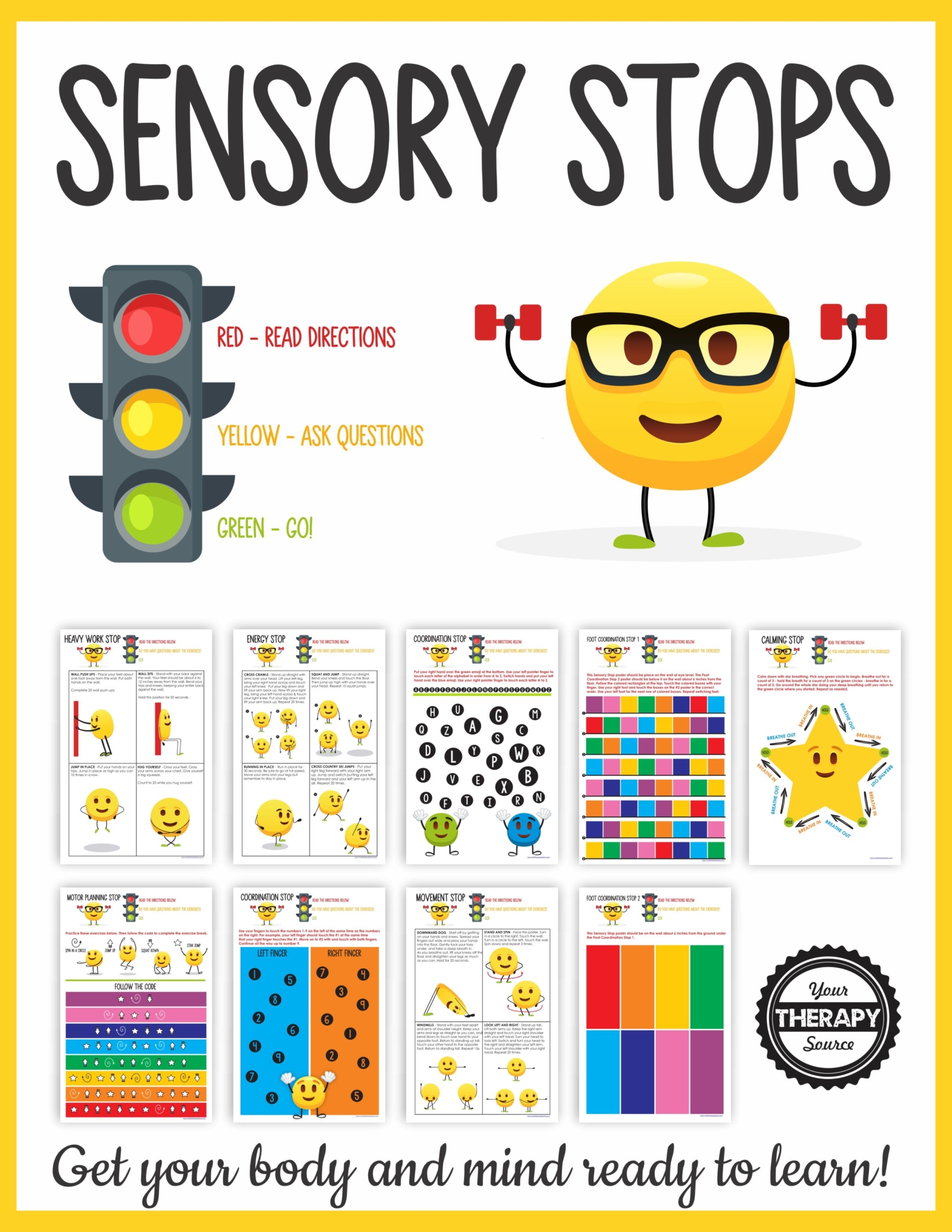
Sensory Path for School and Home – PRINTED version
How Vestibular Activities Can Help Children at School
Enhancing Focus and Attention
Vestibular input is more than just physical sensations; it has profound cognitive implications too. Activities stimulating the vestibular system can boost a child’s concentration and attention span. Think about the calming effect of a gentle swing or the alertness that follows a quick spin. Incorporating these activities into a school day, perhaps during breaks, can re-energize students and sharpen their focus on classroom tasks.
Improving Motor Coordination and Balance
Balance and coordination are crucial for school activities, from P.E. classes to simple tasks like navigating stairs or playground equipment. Regular exposure to vestibular activities, like obstacle courses or hopscotch, can refine these skills. Over time, this can translate to enhanced motor proficiency, better handwriting, and increased participation in sports and games.
Supporting Sensory Regulation
Every child has unique sensory needs. Some might be sensory seekers, craving intense stimulation, while others might be easily overwhelmed. Introducing vestibular activities in the classroom, tailored to individual needs, can help regulate these sensory challenges. A short session on a therapy ball or log rolling can provide the right dose of calming vestibular input, setting the stage for productive learning.

Sensory Strategies Workbook
How Vestibular Input Can Help Children at Home
Activities for Home
Home is an ideal setting for vestibular stimulation, given the comfort and flexibility it offers. Simple activities can make a difference. Kids can engage in trampoline jumps, play on a tire swing, or even perform rhythmic dances. Even household items, like a couch or blanket, can be tools. Rolling from one end of the couch to the other or being swaddled in a blanket offers beneficial vestibular input.
The Relationship Between Vestibular Input and Daily Routines
Incorporating vestibular activities into a child’s daily routine can have holistic benefits. Morning spins or swing sessions can invigorate them for the day ahead. Evening activities, like rocking in a chair or gentle bouncing, can calm and prepare them for bed. By seamlessly integrating these activities, parents can ensure their kids receive consistent and constructive vestibular stimulation.
Calming Vestibular Input
Certain activities can have a soothing effect, helping children relax, particularly if they’re overstimulated or anxious.
- Activities that Soothe and Relax: Gentle rocking in a chair or lying in a hammock can provide calming sensations.
- The Role of Rhythmic Movement and Rocking: Consistent, rhythmic movements, like swaying or gentle bouncing, can promote relaxation.
Alerting Vestibular Input
For children who might need a boost in alertness, certain dynamic activities can provide the necessary stimulation.
- Activities that Stimulate and Awaken:Spinning games, quick swinging, or even fast obstacle courses can energize.
- The Importance of Active and Dynamic Movements: Activities like dancing, hopscotch, or quick-paced games can offer the alertness some children need.
Integrating these activities into children’s lives, whether at home, school, or play, can profoundly influence their sensory experiences.
Tips and Precautions
When engaging in vestibular activities, especially with children, it’s crucial to prioritize safety and be attuned to their unique needs. Here are some tips and precautions to keep in mind:
Ensuring Safety During Activities:
- Always supervise children during any vestibular activity.
- Use protective equipment, like helmets or knee pads, when needed.
- Ensure that the environment is safe, free from obstructions, and suitable for the activity. For instance, if using a swing, check its strength and stability.
Considerations for Children with Specific Health Conditions:
- Some children may have medical conditions that affect their tolerance to vestibular activities. Always consult with a healthcare professional before introducing new exercises.
- Be mindful of children with conditions like epilepsy, as certain stimuli can trigger seizures.
- Children with musculoskeletal issues, like past fractures or joint problems, might need modified activities.
Signs a Child May Be Overwhelmed:
- Watch for signs of distress or discomfort. Rapid breathing, pallor, or sudden mood changes can indicate a child is overwhelmed.
- If a child expresses dizziness, nausea, or wants to stop, halt the activity immediately.
- Some children might retreat or shy away from an activity if it’s too intense. Always respect their boundaries and never force participation.
Monitoring Responses to Activities:
- It’s essential to gauge how a child responds during and after an activity. Some children might need more time to acclimate to specific exercises.
- Always encourage open communication and feedback. Let children express how they feel or if an activity is too challenging.
- Encourage student agency and choice when it comes to choosing activities to foster sensory integration. Use the vestibular activities mini poster to provide visual supports. You can download it at the bottom of this post.
- Remember that every child is unique. What works for one might not be suitable for another. It’s crucial to find a balance and adjust based on individual needs.
With these tips in mind, vestibular activities can be both beneficial and enjoyable. However, always prioritize a child’s well-being and consult professionals when in doubt.
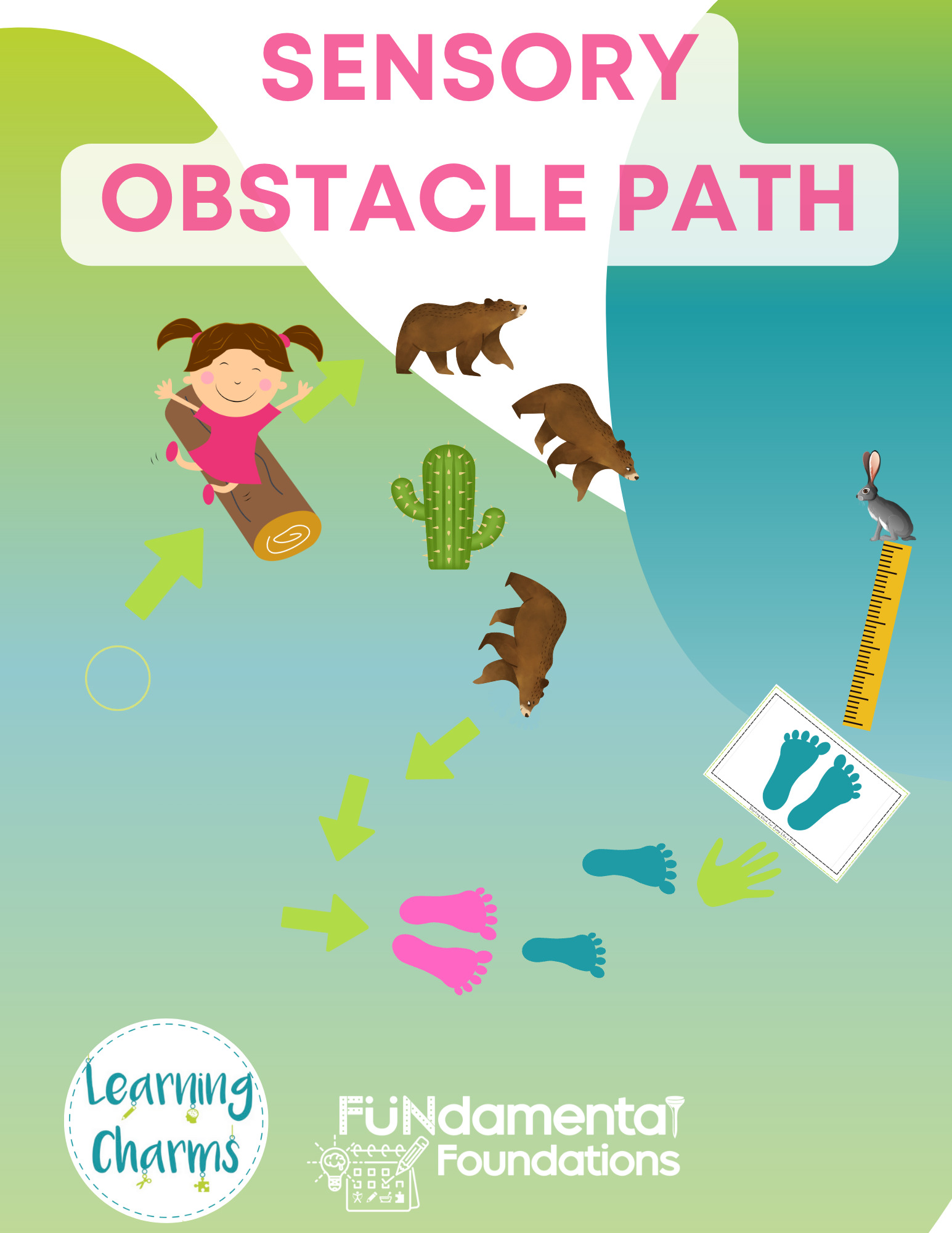
Sensory Path Obstacle Course
List of Vestibular Input Activities Indoors
Indoor spaces can be optimized for vestibular stimulation, enhancing children’s sensory experience within the comforts of a controlled environment.
- Swings and Hammocks: Securely installed indoor swings or hammocks can provide the gentle or intense movement some children seek.
- Trampoline and Bouncing: Mini trampolines or bouncing balls can offer a fun and effective vestibular workout.
- Slides and Obstacle Courses: Setting up a small slide or creating obstacle courses using couch cushions or mats can be both entertaining and beneficial.
Outdoor Vestibular Activities
The great outdoors presents vast opportunities for children to engage with their vestibular system, enhancing both physical and cognitive skills.
- Playground Swings and Equipment: Traditional playgroundswings, tire swings, or even spinning equipment can provide varied vestibular input.
- Bike Rides and Scooters: These not only improve balance but also offer a sense of freedom and exploration.
- Monkey Bars and Balance Beams: Challenging and engaging, these help in refining coordination and spatial awareness.
Vestibular Activities in the Classroom
The classroom environment, with a bit of creativity, can support vestibular input, aiding in sensory regulation and focused learning.
- Classroom Setups for Vestibular Input: Consider seating options like therapy balls or wobble stools.
- Short Breaks and Activities for Sensory Integration: Implement short movement breaks such as log rolling or jump rope sessions.
Here is a list of 10 ideas to help the student’s nervous system by providing vestibular movement and proprioceptive input in the classroom:
- Wobble Chair Time: Use wobble chairs or cushions for seating, allowing students to move gently while they work.
- Desk Push-Ups: Have students use their desks to perform push-ups, strengthening upper body and providing proprioceptive and vestibular input.
- Spinning Breaks: Allow short breaks where students can spin in place, then stop and focus on a fixed point, aiding in equilibrium.
- Therapy Ball Seating: Swap out traditional chairs for therapy balls. This allows students to bounce gently while engaging core muscle tone and promoting balance and upright posture.
- Tilt Board Tasks: Use tilt or balance boards for standing tasks or during reading sessions, challenging balance and offering vestibular stimulation.
- Jump Rope Intervals: Incorporate short jump rope sessions. Jumping provides both vestibular and proprioceptive benefits.
- Rock and Read: Set up a corner with a rocking chair where students can read. The rhythmic motion can help with focusing attention.
- Walking on a Line: Tape lines on the floor and have students walk heel-to-toe or try other patterns to challenge their balance.
- Log Rolling: Create a space where students can safely roll from one end of a mat to the other, providing excellent vestibular input.
- Classroom Obstacle Course: Occasionally rearrange furniture to form an obstacle course. Navigating through it can offer varied sensory inputs.
Incorporating these activities can be a game-changer, not just for children with sensory processing challenges but for all students, aiding focus, relaxation, and overall sensory regulation.

Sensory Strategies Workbook
10 Extracurricular Activities or Sports to Stimulate the Vestibular System
- Gymnastics: This activity involves tumbling, rolling, balancing, and jumping, all of which stimulate the vestibular system.
- Rock Climbing: Climbing challenges spatial awareness, muscle coordination, and balance, providing rich vestibular experiences.
- Martial Arts: Movements in martial arts, especially in forms or katas, require balance, coordination, and spatial awareness.
- Swimming: The buoyancy of water combined with various swimming strokes offers a unique vestibular experience.
- Ice Skating or Roller Skating: Balancing on blades or wheels and moving in different directions offers substantial vestibular stimulation.
- Ballet and Dance: Dance routines, especially spins, jumps, and balance-focused movements, are great for the vestibular system.
- Horseback Riding: The rhythmic movement of riding, combined with the need for balance and coordination, makes this a rich vestibular activity.
- Cycling: Riding a bike, especially on varied terrains, challenges balance and provides continuous vestibular input.
- Surfing or Paddleboarding: The act of balancing on a moving surface on water offers dynamic vestibular stimulation.
- Trampolining: The act of jumping, bouncing, and maintaining balance on a trampoline is a powerful source of vestibular input.
Engaging in these activities can immensely benefit anyone, especially those seeking to improve or challenge their vestibular system. They offer vestibular stimulation and combine other sensory experiences, enhancing overall sensory integration.
Sensory Activities Throughout the School:
Hallways:
- Sensory Input Stations:Use posters or floor decals to create sensory paths, and hopscotch patterns, offering jumping and hopping opportunities.
- Line Walking: Paint or tape lines in various patterns (zigzag, spiral, straight) for students to walk along, heel to toe.
- Log Roll Station: Designate areas with soft mats where students can safely log roll.
- Jump Points: Place jumping spots at intervals, encouraging students to leap from one to the next.
- Spin Zones: Mark areas where students can safely spin a few times before continuing on.
- Scooter Board: Lying on your belly while propelling the scooter board is excellent for vestibular input.
Cafeteria:
- Balance Seating: Incorporate wobble stools or cushions in some seating areas.
- Dance Breaks: Designate times where upbeat music plays for a minute, prompting students to dance in place.
- Stretch and Bend Zones: Encourage simple stretching exercises while waiting in line.
- Rhythmic Movement: Occasionally introduce hand drumming sessions, with students tapping out rhythms on tables.
Recess:
- Swinging: Ensure swings are available, which’re excellent for vestibular input.
- Balance Beams: Install beams or logs for students to walk or balance upon.
- Merry-Go-Rounds or Spinners: Offer equipment that allows for safe spinning activities.
- Climbing Structures: Jungle gyms or climbing walls challenge the vestibular system and improve coordination.
- Jump Ropes: Make available jump ropes for individual or group skipping activities.
- Tire Obstacle Course: Set up old tires in patterns for students to jump in and out of or balance across.
- Sensory Gardens: Designate areas where children can walk on different surfaces (sand, pebbles, grass) to experience varied tactile and vestibular sensations.
Incorporating such activities and structures throughout the school can create a holistic sensory-friendly environment, benefiting all students and especially those with sensory processing needs. Proper supervision and safety measures should always be in place to ensure that these activities are conducted safely.
What Happens When There is Dysfunction in the Vestibular System?
Symptoms and Signs of Vestibular Dysfunction:
When the vestibular system doesn’t work correctly, a range of signs can become evident. Individuals might experience symptoms like dizziness, vertigo, or imbalance. They could face difficulty coordinating their movements.
Some children may exhibit signs related to sensory processing disorder (SPD). This disorder means their brain struggles to interpret sensory input effectively. For these children, the vestibular dysfunction might make them overly sensitive or under-responsive to movement.
They could either shy away from activities like playground swings due to overwhelming sensations or seek intense spinning to satisfy their sensory needs. Other symptoms related to SPD include difficulty with motor tasks, clumsiness, or an unusual posture.
Impacts on Daily Life and Learning:
Dysfunction in the vestibular system can deeply affect one’s everyday life. Tasks like walking straight or quickly turning might become overwhelming or daunting. For students, learning becomes challenging if they continuously battle sensory distractions.
Engaging in activities that demand balance or coordination, like navigating stairs or playing certain sports, can pose significant hurdles. Children with vestibular issues combined with SPD can face challenges in social interactions, leading to anxiety or diminished self-confidence in school or social scenarios.
How Can Occupational Therapy Help?
The Role of Occupational Therapists in Vestibular Input:
Occupational therapists are paramount in addressing vestibular dysfunctions, especially when intertwined with SPD. They assess individual sensory needs and offer tailored interventions. Their goal is to help children and adults manage daily tasks with greater ease and confidence.
Techniques and Strategies Used:
Occupational therapists utilize a plethora of activities and exercises targeting the vestibular system. Techniques can encompass swinging, balancing exercises, or rhythmic movements. Tools like therapy balls, wobble boards, or obstacle courses can be integral. They also educate families on integrating vestibular input activities at home, ensuring a consistent approach. By deeply understanding each patient’s unique sensory needs, they design strategies fostering optimal sensory integration.
Summary
Our understanding of the vestibular system’s significance, particularly for children, can usher in transformative improvements in their daily interactions and learning experiences. While dysfunction in this system can present challenges, early detection paired with expert intervention, such as occupational therapy, offers a path forward. By incorporating safe and tailored vestibular activities, we can support children in navigating their sensory environment with confidence and ease.
Key Points about Vestibular Input:
- Vestibular System Importance: Central to our balance, coordination, and how we perceive our surroundings.
- Positive Impact in School:Vestibular input can heighten students’ focus, concentration, and motor coordination, aiding in academic success.
- Home Benefits: Integrating vestibular activities at home can support daily routines and enhance children’s physical and sensory experiences.
- Dysfunction Indicators: Watch for signs such as dizziness, difficulty in coordinating movements, and behaviors resembling sensory processing disorder.
- Occupational Therapy’s Role: Expert therapists can devise and adapt strategies, ensuring children get the most from vestibular activities.
- Diverse Activities: From indoor exercises like obstacle courses to outdoor ventures like bike rides, there’s an array of options.
- Safety First: Always ensure a safe environment for activities. Monitor children’s responses and adjust activities accordingly.
- Early Action: Recognizing and addressing vestibular challenges early can pave the way for a child’s smoother sensory journey in both classrooms and homes.
Download your FREE Copy of the Visual Supports for Vestibular Ideas and Activities
Enter your email below to receive a free copy of the poster.
